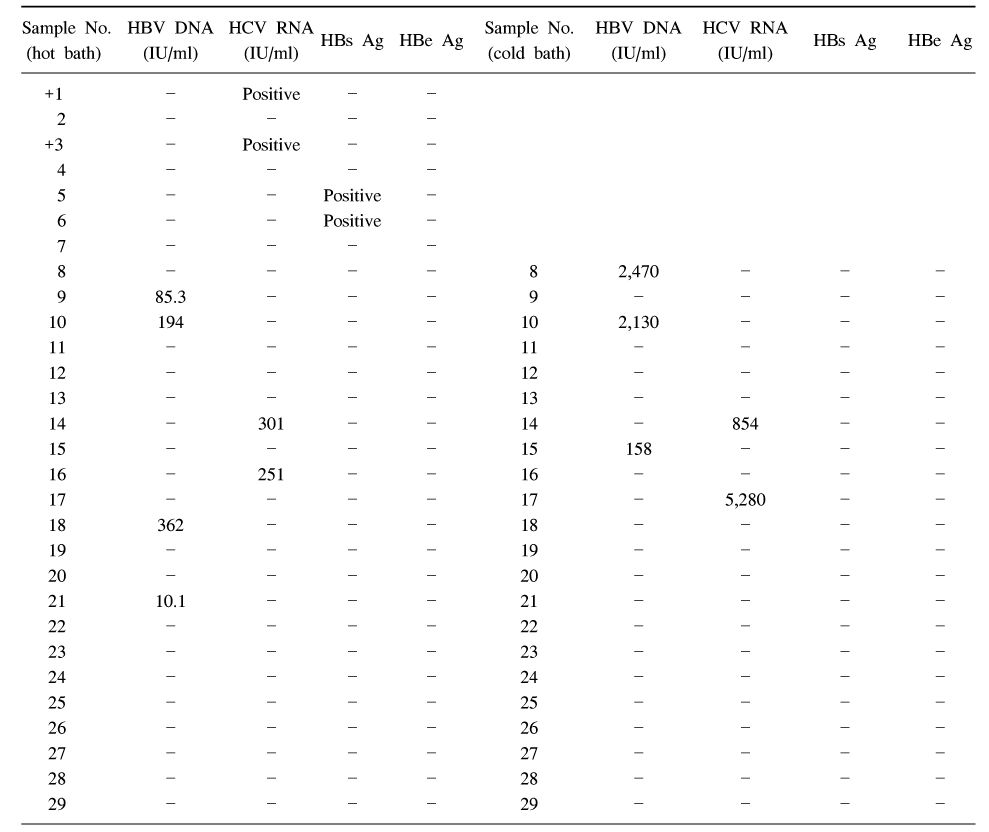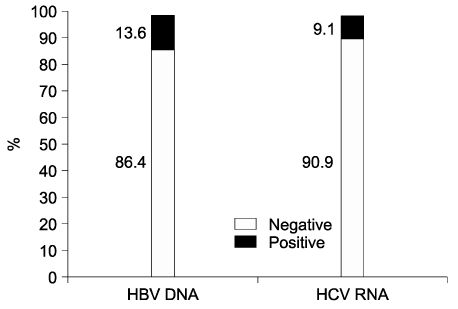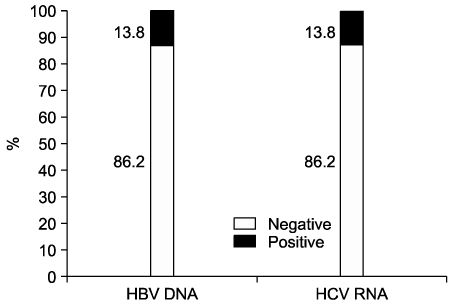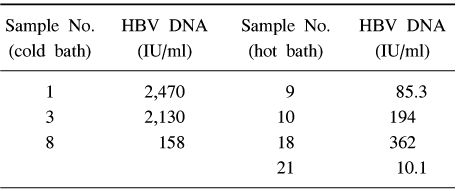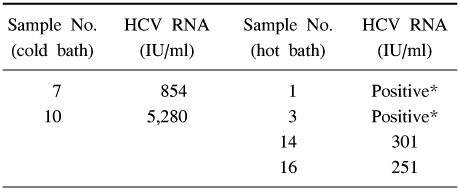많은 환자 분들이 B형 간염이나 C형 간염의 전파경로에 대해 물어보는데 수혈이나 주사침 자상 등의 명확한 원인을 제외하고는 100% 전염된다고 이야기 하기 어려운 상황이 많습니다.
소개해 드릴 논문은 부산지역 공중 목욕탕에서의 욕탕물을 채집하여 B형 간염 바이러스의 정밀 검사인 HBV DNA PCR , C형 간염 바이러스의 정밀 검사인 HCV RNA PCR 검사, HBsAg, HBeAg 검사를 한 논문입니다.
2005-2006년도에 검체를 채집하였고, 결론적으로 일부의 뜨거운 물이나 차가운 물에서 바이러스 DNA, RNA 가 검출되었고 , 바이러스가 검출된다고 반드시 감염이 생기는 것은 아니지만 개방성 상처가 있거나 치질, 치열이 있으신 분들은 공중 목욕탕을 이용하지 않는 것이 좋다고 결론을 내렸습니다.
많은 역학적 연구가 필요하지만 우리나라에는 B형 간염이 , 일본에는 C형 간염이 전통적으로 많은데 탕목욕의 문화와 연관성을 완전히 배제하긴 어려울 것 같습니다.
대한대장항문학회지
2007년 23권 5호 p.297 ~ p.304
공중 목욕탕에서 B형 및 C형 간염바이러스의 검출; 치핵환자에서 안전성 연구
Detection of HBV DNA and HCV RNA in Public Bath; A Study about Safety of Prolapsed Hemorrhoidal Patients
이진권 ( Lee Jin-Kwon ) – 부산대학교 의과대학 외과학교실
김현성 ( Kim Hyun-Sung ) – 부산대학교 의학전문대학원 외과학교실 이은엽 ( Lee Eun-Yup ) – 부산대학교병원 진단검사의학교실
최인석 ( Choi In-Seok ) – 부산의료원 외과
오남건 ( Oh Nahm-Gun ) – 부산대학교 의과대학 외과학교실
– Abstract –
Purpose:The Sitz bath is a commonly used nonsurgical treatment for patients with hemorrhoids. When these patients use public baths, possibilities exposure to infectious diseases due to public-bath utilization by exist for person infected with many kinds of diseases. In particular, because Hepatitis type B and type C viruses are infection sources for chronic liver diseases, we shall examine the risks of infections of HBV and HCV in acute hemorrhoids patients by examining the existences of HBV DNA and HCV RNA in the waters of public baths.
Methods:From March 2005 to March 2006, 29 hot- water samples and 22 cold-water samples were obtained from public baths within Busan. With each sample, COBAS Amplicor HBV DNA monitor and HCV RNA monitor were used to run a quantitative (PCR) for HBV DNA and HCV RNA. Additionally, HBsAg and HBeAg were examined through chemiluminescent microparticle immuno assay (CMIA).
Results:HBV DNA was detected in 4 samples and HCV RNA was detected in an other 4 samples of the 29 samples from the hot baths. In 22 samples from the cold baths, HBV DNA was detected in 3 samples and HCV RNA in an other 2 samples. The mean levels of HBV DNA detected were 162.8 IU/ml and 1,586 IU/ml and the mean levels of HCV RNA were 276 IU/ml and 3,067 IU/ml from specimens in hot and cold baths, respectively. In the tests for HBs Ag and HBeAg, among 51 samples, 2 hot-water samples showed positive for HBs Ag while the others showed negative.
Conclusions: HBV DNA and HCV RNA were detected in both the hot and the cold waters of public baths. However, this result cannot be regarded as demonstrating infectivity, but further studies are thought to be needed to examine the risks of infections to patients with acute hemorrhoids of higher than third degree or patients with open wounds or external orifices. A patient with hemorrhoids or fistulas with external orifices should not use public baths and should undergo curative surgery.
Table. 1. The results of HBV DNA, HCV RNA, HBsAg and HBeAg in all samples
Detection of HBV DNA and HCV RNA in cold bath water (n=22).
Detection of HBV DNA and HCV RNA in hot bath water (n=29).
Quantitative results of HBV DNA
Quantitative results of HCV RNA
– Key Words – 치핵, 좌욕, B형 간염바이러스, C형 간염바이러스, 간염의 전파 Hemorrhoids, Sitz bath, Hepatitis B virus, Hepatitis C virus, Transmission



